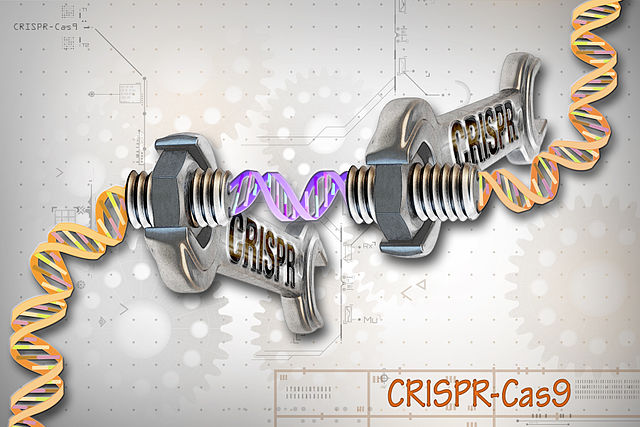The so-called CRISPR technique for editing the genes of plants and animals is being hailed as a more acceptable face of genetic engineering. After all, it doesn’t rely on the insertion of genes from one species into another—which is what previous techniques allowed and what alarmed critics.
No, this technique can cut out precisely an offending gene and let the cell sow things up like new afterwards. No chance of strange interspecies complications. No random mutations created by gene guns that can never shoot straight by design. Just a little editing of an existing gene to subtract what we do not want from a plant or animal (including ourselves).
Hence, the breathless coverage.
But as with practically every biologically driven endeavor these days, we are forgetting first principles as explained by pioneering ecologist Garrett Hardin who tells us that “[t]he science of ecology is founded on this generalization: We can never do merely one thing.”
Not surprisingly, it turns out that CRISPR may not be as accurate as advertised. A recent studyrevealed that “in around a fifth of cells, CRISPR causes deletions or rearrangements more than 100 DNA letters long. These surprising changes are sometimes thousands of letters long.” Oops!
The linked article continues: “So why have the thousands of teams using CRISPR failed to discover this before? Because they have been looking for small mutations in a narrow region around the target site. If that whole region is deleted, this approach makes it appear as if there have been no mutations at all.” As the author of the study noted, “You find what you look for.”
The linked article also points out that researchers are working to increase CRISPR’s accuracy and on versions that simply turn off genes or make them less active rather than performing the more tricky deletion process.
But even if CRISPR becomes more accurate over time (and we certainly cannot expect 100 percent accuracy in the end), we are faced with another problem which flows directly from Hardin’s dictum: An emerging understanding of how genes work suggests that all genes may be implicated in complex traits. Called the omnigenic model, it posits that no one set of genes is responsible for the complex traits we see in animals and plants. Some genes may be more important than others. But all act in concert to create a complex trait.
So what is a complex trait? Here’s a formal definition: “A trait that does not follow Mendelian Inheritance patterns, is likely derived from multiple genes, and exhibits a large variety of phenotypes.” It turns out much of what we want to manipulate in genomes relates to complex traits. Parkinson’s disease and diabetes are related to complex traits. There will be no editing those out of the human genome.
In plants we grow for food those traits include yield per plant, days to flower, days to maturity, seed size, seed oil content and others.
Plant breeders have been breeding for complex traits for centuries. The newest genetic engineering pioneers believe they’ve found a more efficient and precise way of getting the traits we humans desire without inserting genes from other species. But if what they mean by precise is that they will get exactly the result they seek and nothing else, then they are only fooling themselves. Their narrow vision of will inevitably result in unexpected and possibly dangerous consequences.
Even the enthusiastic VOX article cited previously notes some newly discovered dangers of using CRISPR to repair genetic defects in humans: “Scientists have recently learned that the approach to gene editing can inadvertently wipe out and rearrange large swaths of DNA in ways that may imperil human health. That follows recent studies showing that CRISPR-edited cells can inadvertently trigger cancer.” Which is why it is important to keep in mind that “[w]e can never do merely one thing.”
If we were to follow the precautionary principle, we would want to make sure that none of our new creations could have systemic effects that might be ruinous. But governments won’t require that because 1) it would get in the way of fast profits for the politically powerful companies practicing this technique and 2) it would require modern society to drop a naive belief that innovation is always benign. Instead, we will plunge headlong into another uncontrolled experiment carried out on humans and the biosphere because we still haven’t absorbed Garrett Hardin’s first law of ecology.
Image: ” CRISPR-Cas9 is a customizable tool that lets scientists cut and insert small pieces of DNA at precise areas along a DNA strand. The tool is composed of two basic parts: the Cas9 protein, which acts like the wrench, and the specific RNA guides, CRISPRs, which act as the set of different socket heads. These guides direct the Cas9 protein to the correct gene, or area on the DNA strand, that controls a particular trait. This lets scientists study our genes in a specific, targeted way and in real-time” (2015). Author: Ernesto del Aguila III, NHGRI. Via Wikimedia Commons. https://commons.wikimedia.org/wiki/File:NHGRI-97218.jpg






